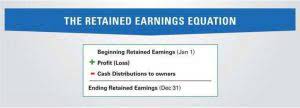
If a firm is liquidated, the book value earnings per share are enough to calculate the worth of each share. The carrying value earnings per share, also known as book value earnings per share, reveals the company’s worth or equity in each share. However, if the company instead makes 20,000 USD to pay investors, each unit of the share will then be 200 USD. This extra amount is generally given to shareholders if the dividend payments made to common shareholders surpass the agreed amount set initially. The cumulative preferred stock dividends accumulate, just as the name implies, and they cannot be lost until they are paid in full.
Authorized Shares vs. Outstanding Shares: An Overview

This implies that preferred shareholders do not have the ability to vote for the board of directors or a corporate policy. Because of their right to vote for corporate policies and elect board members, common shares are also known as ordinary shares or voting shares. If a firm goes bankrupt due to bankruptcy, common stockholders receive nothing. A shareholder, as previously defined, has a stake in the company and https://www.bookstime.com/ owns shares. In a corporation, there are several kinds of shares, each with its own set of rights.
Authorized Shares

Before grouping the shares, they all must be converted to https://www.instagram.com/bookstime_inc the same type. Thus, the situation during the year was equivalent to having 111,000 shares outstanding throughout the year. Group 2 consists of the 8,000 shares outstanding from 1 April to the end of the year and group 3 is the 12,000 shares outstanding from 1 April to 31 August. The weighting of each group by the fraction of the year it was outstanding is shown below. However, a stock dividend or split does have the effect of creating a new “type” of common share in the sense that the percentage of ownership per share is altered. Consequently, the generally accepted accounting principles (GAAP) require the use of an average number of shares outstanding as the starting point for all denominators.
What is the approximate value of your cash savings and other investments?
Let us understand the formula that shall act as the basis of our understanding and the formation of the outstanding shares equation through the discussion below. Most notably, short interest usually is measured as a percentage of the float, rather than shares outstanding. This is because short sellers, when choosing to cover, can only buy the shares actually in the float. And so in theory (and often in practice), highly-shorted stocks with a low float present ripe conditions for a so-called “short squeeze”. A company is limited to issuing only the quantity of shares it’s authorized to issue. Issuing more breaches compliance with securities laws and regulatory agencies will often consider the excessive issuance of improperly authorized shares as void.
- Outstanding shares include share blocks held by institutional investors and restricted shares owned by the company’s officers and insiders.
- These shares are held in the corporation’s “treasury” rather than in circulation and are therefore excluded from the number of outstanding shares.
- Most individuals with enough idle cash to invest are hesitant since they are unsure which company to invest in.
- In general, there are three different levels of market capitalization, and each level has its own profile.
- Owning a share in a company gives you equity, or ownership interest, in the business.
Companies also may hold back authorized shares as a defensive maneuver. A company can maintain a controlling interest by retaining authorized shares. It can also reduce the possibility of a hostile takeover if a majority of shares have yet to be issued. The articles of incorporation may authorize one share or millions of shares for a how do you calculate outstanding shares company that doesn’t have an authorized shares restriction. The number of shares that are available to trade is referred to as the float. The market value of equity is also distinct from the book value of equity.
Weighted average shares outstanding is the process of weighting every number of common stock to reflect how much time they were in effect. For the most part, there’s no need to calculate the number of shares a firm has because the firm itself will disclose the number itself. However, there are still some ways you can figure out share counts as an exercise to confirm your understanding of how the company is capitalized.
Why is earnings per share important?

The number of authorized shares can be changed by a vote from shareholders, typically during the annual shareholder meeting. The life of common stock goes through a few phases, and understanding each step is important for putting the common-stock-outstanding number into proper perspective. In general, there are three different levels of market capitalization, and each level has its own profile. Companies with a market capitalization of less than $2 billion are considered small capitalization, or small caps. Companies with a market capitalization of between $2 billion and $10 billion are considered medium capitalization stocks, also referred to as mid-caps.
Submit to get your retirement-readiness report.
- A company’s outstanding shares may change over time because of several reasons.
- Existing shareholders don’t receive any compensation or existing shares by voting to change the number of authorized shares.
- This number is also used to calculate several key financial metrics, so it’s important to understand how to calculate outstanding shares.
- Once you’ve located the number of treasury stocks, write it down for your calculations.
- If the company has not bought back shares from investors and does not have treasury shares, this line item won’t show up on the balance sheet.
- Understanding stock market terminology allows investors to make appropriate, intelligent, investment-related decisions.
- The shares companies issue are known as authorized shares, which are the maximum number of shares they are lawfully permitted to make available to investors.
A company must often obtain board approval and record quantities via board meeting minutes whenever it decides to issue or sell additional shares. It must prepare appropriate documentation and ensure compliance with state and federal securities laws. The number of outstanding or issued shares is always equal to or less than the total number of authorized shares. Companies often intentionally keep these two figures different so that they have the flexibility to sell more shares in the future should they have financing needs. Let’s say that Helpful Fool Company has repurchased 500 shares in this year’s buyback program.

How to Calculate the Weighted Average of Outstanding Shares
These shares are held in the corporation’s “treasury” rather than in circulation and are therefore excluded from the number of outstanding shares. Outstanding shares include all held by investors, while float excludes restricted shares. These are the shares a company has issued to investors, both publicly and privately. The shares available to investors on the open market are commonly called the float. In general, stocks with low floats will experience more volatility than those with large floats.